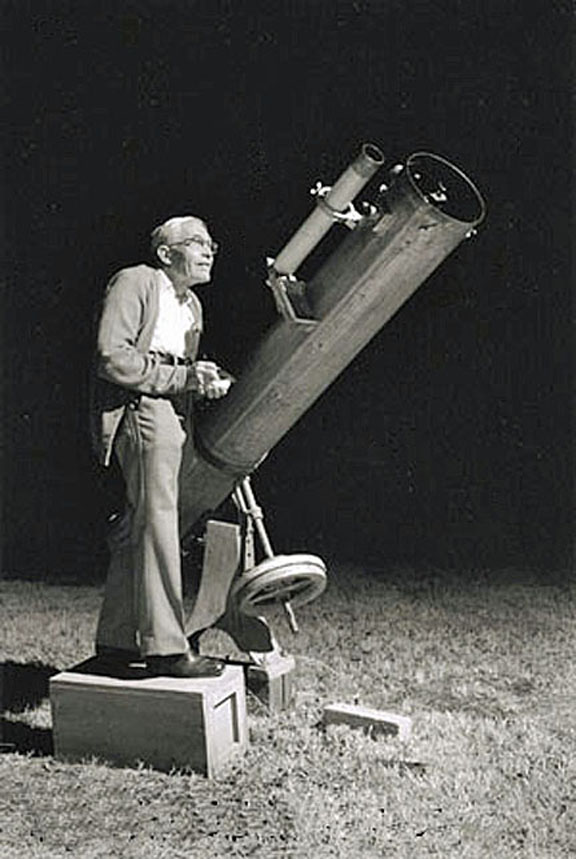Key Takeaways:
- Clyde Tombaugh, Pluto's discoverer, was a humorous and engaging person.
- Pluto's classification as a dwarf planet is a significant topic in planetary science.
- The New Horizons spacecraft will soon provide extensive data about Pluto.
- Pluto is a key object for understanding icy planets and the outer solar system.
I have a soft spot in my heart for Pluto. When I was a young editor at Astronomy magazine and editor of Deep Sky, in the 1980s, I hung around a set of friends and writers that included comet discoverer David Levy, Lowell Observatory astronomer Brian Skiff, and others — friends of Clyde Tombaugh. (David became his biographer.) On a number of occasions, I observed with Clyde, either at his home in Las Cruces, New Mexico, or once for several days at the Texas Star Party in Ft. Davis, when he spoke at the astronomy meeting.
So I liked Clyde a lot, and he was great fun; Clyde was then in his 80s, very short and stooped due to spinal curvature, somewhat frail, and absolutely hilarious — full of rapid-fire puns. He loved talking about various objects in the sky, much more distant than Pluto, and always had funny things to say or do. Once in Texas, he watched carefully and assisted as I sketched some deep-sky objects in a large art notebook I had, using a big telescope that necessitated a ladder to reach the eyepiece. (We had to be quite cautious helping Clyde climb ladders in the darkness.) Suddenly, I couldn’t find the notebook, and we all started a search for it.
The book had some valuable drawings in it in the sense that they had taken lots of time to make, and I was a little alarmed. After David Levy and others wandered around with me, looking for it, suddenly Clyde realized had had been sitting on it, underneath his bottom and on top of a folding chair. We all laughed for a while, and — given the rather silly nature of the group — Clyde signed the sketchbook, “I sat on this book/Clyde W. Tombaugh/29 May 1987.” David tried to one-up him by signing, “It was my chair/David H. Levy/29 May 1987 TSP.” I added a final flourish of kookiness by signing, “It’s my book/Dave Eicher/29 May 1987.”
Amazingly enough, the technical status of Pluto has become one of the most thought about aspects of planetary science over the past decade. Trust me, Pluto doesn’t care — it’s still there and is about to be visited by the New Horizons spacecraft, an exciting flyby mission that will reveal enormous amounts of science about the “last frontier” of the major solar system bodies, at least as they were once defined.
We now see Pluto clearly, for the first time, in context. It is a dwarf planet — and a planet. It is one of the most crucial small objects in the solar system, opening a gateway on understanding icy planets and on a huge era of discovery that will no doubt come. And we are perched on the doorstep of an explosive dawn of understanding Pluto and all small bodies in the solar system when New Horizons swings past the planet July 14, and delivers its data for a span of more than 16 months.
Wherever he is, despite the International Astronomical Union, Clyde Tombaugh is smiling.
David J. Eicher is Editor of Astronomy magazine. Follow him on Twitter: @deicherstar.










